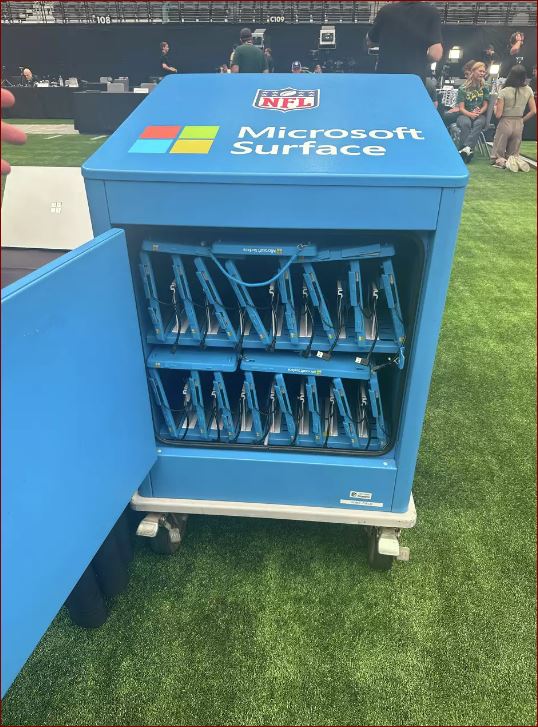
If Jamal Morris wants to review a specific play, in-game footage will be ready for him by the time he reaches the sideline.
“Just like that,” said Morris, a senior linebacker at the University of Houston, snapping his fingers.
“Sometimes when I arrive on the sideline, my coach will ask, ‘OK, explain this play to me,’” he added. “I consider myself a critical thinker, so I’ll say something like, ‘I believe I did this, or I think he did that.’ But having a tablet will be a game-changer.”
This season, college football is embracing new technology, allowing FBS teams to utilize smart tablets on the sidelines and coach-to-player helmet communication during games.

As part of the partnership announced in July between the Big 12 and Microsoft, all 16 schools, including Houston, will receive 18 Surface tablets for use in the locker room, on the field, and in coaching booths.
The Big 12 is the only major conference partnering with Microsoft, while Apple has a similar agreement to provide iPads to the SEC, Big Ten, and ACC.
The introduction of tablets is part of efforts to “evolve the college game,” according to Gabe Rudolph, Microsoft’s senior manager for sports partnerships.
These tablets are designed to display “real-time” video feeds of previous plays, with footage uploaded via a wired connection (wireless capability is anticipated for the 2025 season). The tablets will only include game day videos and cannot have pre-loaded content.
Instead of waiting until after the game, as has been common practice, videos of plays are uploaded to a server and streamed to Surface devices within three seconds, Rudolph explained. Multiple camera angles will be available, allowing coaches to draw annotations and zoom in on specific players.
In addition to providing immediate feedback, players and coaches believe the tablets will help teams make real-time adjustments regarding coverage, blocking schemes, exploiting mismatches, analyzing what worked or didn’t with specific formations, and identifying missed assignments.
While multiple angles will be accessible, the tablets won’t incorporate data or communications with the video, per the NCAA Playing Rules Oversight Panel, which authorized their use in April. Some schools tested tablets during non-playoff bowl games last season.
“It’s about giving players and coaches greater access to information to enhance their performance,” Rudolph said, showcasing the tablets at the Big 12’s media event in Las Vegas. “If a player comes off the field after missing an assignment and the coach is criticizing them, they can’t visualize that until postgame footage. Now, they can receive live video feedback just seconds after the play ends, enabling them to adjust their strategy on the fly.”

UH quarterback Donovan Smith believes the tablets will introduce a “different dynamic” to college football.
“It will provide almost instant feedback,” Smith noted. “We can analyze what we saw and identify patterns from the film.”
While the NFL has utilized tablets for the past ten years, teams only access still images, not video.
If college football is going to adopt NFL practices, UH coach Willie Fritz wants uniformity across the board.
“I’ve always viewed it as essential for coaching to stand on the sideline, observe, communicate, and understand what’s happening on the field,” Fritz explained. “I’m not sure we have that advantage anymore. If we want to align with the NFL, we should fully embrace it and use the same rules. It seems like that’s the direction we’re heading, and I see no issue with it.”
However, not all coaches support using tablets during games.
“It feels like cheating,” said Arizona State coach Kenny Dillingham. “You lose the need to see the game unfold live and adapt. It leads to larger game plans since things that might have gone unnoticed before can now be easily seen.”
While Texas Tech coach Joey McGuire called the tablets a “game-changer,” Baylor’s Dave Aranda expressed some concerns.
“I used to take pride in making adjustments, and this approach somewhat undermines that,” Aranda said.

Leave a Reply